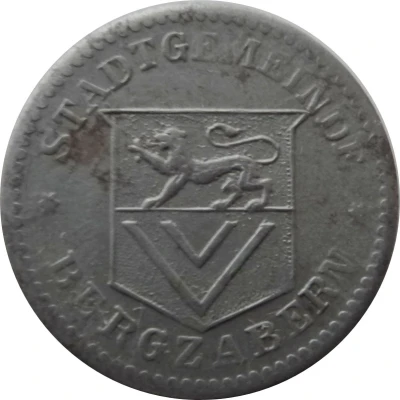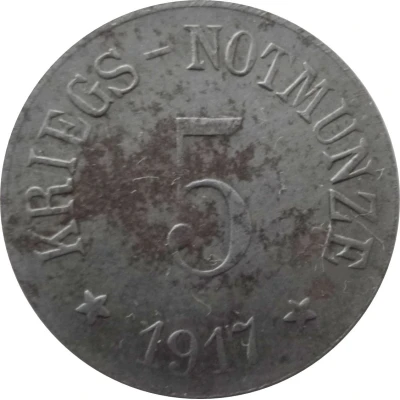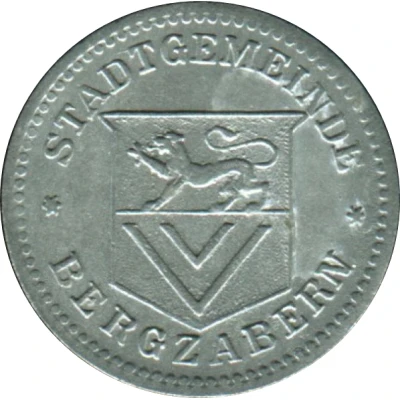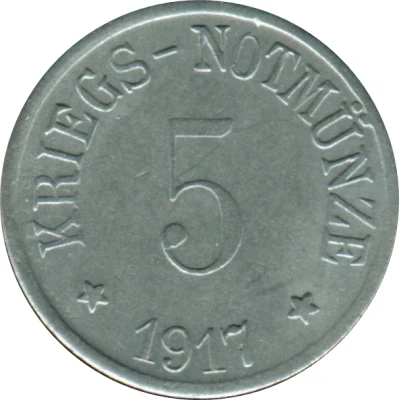


© Willem63 (CC BY-NC-SA)
5 Pfennigs - Bergzabern
1917 year| Iron | 1.9 g | 18.0 mm |
| Issuer | City of Bergzabern (Federal state of Bavaria) |
|---|---|
| Emperor | William II (Wilhelm II) (1888-1918) |
| Type | Standard circulation coin |
| Year | 1917 |
| Value | 5 Pfennigs (5 Pfennige) (0.05) |
| Currency | Mark (1914-1924) |
| Composition | Iron |
| Weight | 1.9 g |
| Diameter | 18.0 mm |
| Thickness | 1.1 mm |
| Shape | Round |
| Technique | Milled |
| Orientation | Medal alignment ↑↑ |
| Demonetized | Yes |
| Updated | 2024-10-04 |
| Numista | N#312927 |
|---|---|
| Rarity index | 91% |
Reverse
Legend and date surrounding denomination centered
Script: Latin
Lettering:
KRIEGS - NOTMÜNZE
5
★ 1917 ★
Edge
Plain
Interesting fact
One interesting fact about the 5 Pfennigs - Bergzabern 1917 coin is that it was issued during a time of economic turmoil in Germany, known as the "Inflationary Period" (1914-1923), when the value of the German mark plummeted, and the prices of goods and services skyrocketed. To combat this issue, the government introduced a new currency, the "Papiermark," which was backed by a gold standard, and featured coins like the 5 Pfennigs - Bergzabern 1917, made of iron and weighing 1.9 grams. This coin, despite its small denomination, played an important role in stabilizing the German economy during a time of great economic uncertainty.



